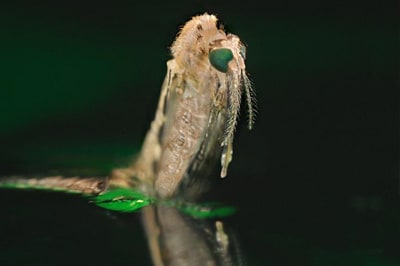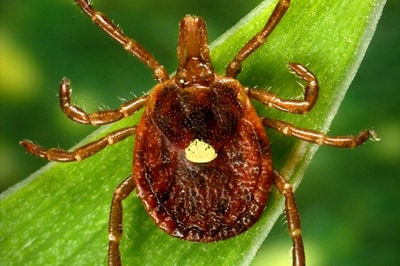AMD: Identifying Vector-borne Diseases
Virtually everyone on earth is at risk of becoming ill from bacteria, parasites, and viruses transmitted through the bites of common vectors, such as ticks, mosquitoes, and flies. In the past decade, we have seen not only an increase in the number of dangerous vector-borne diseases, such as dengue and Lyme disease, but also the geographic spread of the vectors. CDC is using AMD methods to better understand the diseases people get from tick and insect vectors. In addition, this work has led to discoveries of previously unknown bacterial and viral threats. Below are some key AMD activities related to vector-borne diseases.

Mosquitoes can leave more than an irritating itch when they bite, they also can infect people with pathogens. While the United States eliminated some mosquito-borne diseases, such as malaria, decades ago, other mosquito-borne viral threats, such as chikungunya and Zika, have recently invaded our borders. However, AMD technologies are helping CDC scientists take the bite out of mosquito-borne diseases. With next-generation genomic sequencing and other technologies, CDC scientists can generate comprehensive genetic descriptions of mosquito-borne viral strains, identify changing mosquito-borne diseases, and even track insecticide resistance in mosquito populations. AMD methods also help scientists rapidly develop highly specific diagnostic tests for emerging mosquito-borne viruses. Using AMD, we are monitoring changes in virus genomes, improving our understanding of virus transmission, and increasing our ability to predict future outbreaks.
See also Fighting Malaria on Three Fronts

For people who work and play outdoors, ticks can be a serious health threat. Public health officials estimate that hundreds of thousands of Americans seek medical care for symptoms of tick bites each year. Tick bites can result in serious or deadly diseases, such as anaplasmosis, babesiosis, ehrlichiosis, Rocky Mountain spotted fever, and Lyme disease. In some cases, these infections can be deadly. And, with AMD methods, scientists are studying human and tick specimens and uncovering even more, previously unknown, tickborne pathogens. For example, scientists have used AMD and other laboratory methods to discover and study several emerging tick-associated threats, including Heartland virus and Bourbon virus, and Borrelia mayonii bacteria, a cause of Lyme borreliosis, in the United States. Early diagnosis and treatment can save lives. Unfortunately, early symptoms of most tickborne diseases are similar and nonspecific, which can make it challenging for doctors to make a prompt diagnosis and recommend the right treatments. Using genetic data generated by AMD methods, researchers can develop improved diagnostic assays to distinguish between tickborne diseases more rapidly, speeding patient diagnosis and treatment.